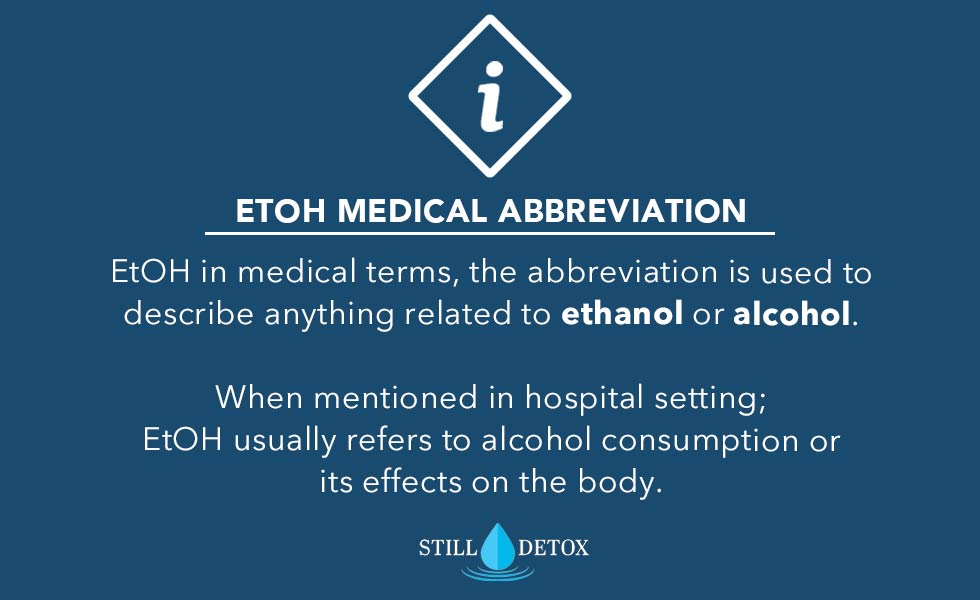EtOH, the medical abbreviation for ethyl alcohol or ethanol, is the substance widely known as alcohol, commonly consumed in beverages. In medical and diagnostic contexts, EtOH is often used in terms like EtOH abuse and in classifications such as EtOH abuse ICD-10 from the International Classification of Diseases. This abbreviation helps clinicians quickly reference a widely impactful substance in public health.

According to the National Institute on Drug Abuse (NIDA), alcohol is among the most commonly used substances globally, with significant cultural, social, and health implications. More individuals over the age of 12 in the United States report annual alcohol use compared to any other drug, and alcohol use disorder (AUD) remains the most prevalent substance use disorder in the country.
Understanding EtOH and Its Composition
Ethyl alcohol is the colorless, volatile compound present in wine, beer, and spirits, and is distinguishable by its clear appearance and wine-like odor. Its chemical formula is C₂H₅OH (or CH₃CH₂OH), which indicates its molecular structure and categorizes it under a group of organic compounds called alcohols.
- Types of EtOH: The most common alcoholic beverages include wine, malt liquor, beer, distilled spirits, and grain alcohol. Each type varies in ethanol concentration, with beer generally containing the least alcohol and distilled spirits containing the highest levels.
Common Forms and Terminology of EtOH
In scientific and common usage, EtOH is referred to in various forms:
- Alcohol: The term “alcohol” is generally used to refer to any ethanol-containing beverage.
- Grain Alcohol: This denotes a stronger form of alcohol, known for its higher ethanol content.
- Ethyl Alcohol: The scientific term for the substance that is responsible for the intoxicating effects of alcoholic beverages.
EtOH and Alcohol Use Disorder (AUD)
Alcohol use disorder, also referred to as EtOH use disorder, is the clinical term for dependency on ethanol. A key indicator of this disorder is the inability to abstain from drinking despite adverse consequences on one’s personal, social, or professional life. The disorder is characterized by a strong compulsion to consume alcohol, often leading to significant health and lifestyle challenges.
Statistics on Ethanol Abuse
- Approximately 14.5 million Americans aged 12 and older were reported to have alcohol use disorder, based on data from the 2019 National Survey on Drug Use and Health (NSDUH).
- Alcohol ranks as the third leading preventable cause of death in the U.S., with about 95,000 fatalities annually attributed to alcohol-related factors.
Blood Alcohol Content (BAC): Key Understanding
Blood alcohol content (BAC) measures the concentration of ethanol in a person’s bloodstream and serves as an important metric in assessing intoxication levels. BAC levels, expressed as a percentage, influence motor skills, cognition, and overall functioning.
- Low BAC Levels (0.01%-0.05%): Typically result in mild relaxation, minor impairment in judgment, and slight mood elevation.
- Moderate BAC Levels (0.06%-0.15%): Associated with impaired motor skills, judgment, and heightened emotions, with slowed reaction times.
- High BAC Levels (>0.15%): Lead to severe impairment, including blackouts and potentially life-threatening respiratory depression.
The Spectrum of EtOH Abuse: From Occasional Use to Dependency
EtOH misuse spans a continuum from social drinking to chronic dependency, with each level presenting distinct health risks:
- Binge Drinking: Defined by excessive consumption in a short period. Typically, this means five or more drinks for men and four or more for women within two hours.
- Heavy Drinking: Regular, excessive drinking that increases health risks over time.
- Chronic Dependency: An advanced stage of abuse where alcohol becomes a physical and psychological necessity.
Impact of EtOH Abuse on the Brain
Long-term EtOH abuse causes significant neurological effects, including cognitive decline and behavioral changes. Chronic exposure to ethanol can result in:
- Wernicke-Korsakoff Syndrome: A vitamin B1 deficiency-related condition, leading to confusion, memory loss, and cognitive impairment.
- Alcoholic Dementia: A progressive condition causing irreversible memory and cognitive impairments.
- Delirium Tremens (DTs): Severe withdrawal symptoms that require immediate medical intervention.
Effects of Ethanol on Liver Health
Prolonged EtOH abuse heavily impacts liver health, leading to inflammatory and degenerative conditions:
- Alcoholic Fatty Liver Disease: Fat accumulation in the liver due to excessive alcohol consumption.
- Alcoholic Hepatitis: Inflammation of the liver that can result in liver failure if untreated.
- Cirrhosis: Scar tissue formation in the liver, leading to irreversible damage and potentially fatal complications.
Understanding the Mental Health Implications of EtOH Abuse
Alcohol abuse significantly increases the risk of mental health disorders, including:
- Depression and Anxiety: Chronic alcohol use often exacerbates symptoms of depression and anxiety.
- Bipolar Disorder: Alcohol can worsen mood swings associated with bipolar disorder.
- Substance Use Disorders: Alcohol use often correlates with other substance dependencies.
Steps Toward Recovery from EtOH Addiction
Recovery from EtOH addiction is a multi-faceted process involving detoxification, therapy, and long-term relapse prevention:
- Acknowledgment: Recognizing the need for help is the first essential step.
- Detoxification: A medically supervised detox is crucial for managing withdrawal symptoms safely.
- Therapy: Includes cognitive-behavioral therapy (CBT) and group counseling to build coping skills.
- Medication-Assisted Treatment (MAT): Involves medications to reduce cravings and manage withdrawal.
Don’t let alcohol addiction control your life. Contact Still Detox today to learn more about our alcohol detox and inpatient rehab programs and take the first step towards a healthier, happier life.








